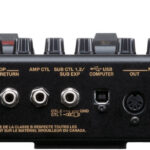“Silent Night” is a timeless Christmas carol, beloved for its peaceful melody and simple harmony. For guitarists, it’s a perfect song to learn, especially during the holiday season. This lesson provides an easy-to-learn fingerstyle guitar arrangement of “Silent Night”, written in the key of G, making it accessible for beginner to intermediate players. You’ll find that learning “Silent Night” guitar notes is a rewarding experience, allowing you to play this classic carol with a beautiful solo guitar sound.
Playing fingerstyle guitar means you’ll be handling the melody, bassline, and accompaniment all at once. Think of it as creating a full sound with just your guitar. For “Silent Night”, we’ll focus on bringing out the recognizable melody while adding a harmonic texture with chords and arpeggios. This arrangement is designed to be approachable, avoiding overly complex techniques, while still sounding elegant and musically satisfying.
Let’s dive into the complete arrangement first to get an overview, and then we’ll break it down section by section.
 Silent Night Chord Sheet
Silent Night Chord Sheet
This complete chord sheet provides an overview of the entire Silent Night guitar arrangement in G, ideal for visual learners.
This arrangement focuses on three key elements of solo fingerstyle playing:
- Melody: Ensuring the melody is clear and prominent is crucial so listeners can easily recognize “Silent Night”. The melody notes are primarily on the higher strings of the guitar.
- Bass: A steady bass line provides the harmonic foundation. In this arrangement, the bass part is relatively simple and consistent.
- Accompaniment: Chord arpeggios are used to create a gentle and flowing accompaniment, adding depth and richness to the overall sound.
This “Silent Night” guitar notes arrangement is intentionally designed to be straightforward. The bass line remains quite consistent, and the arpeggios are derived directly from the chord shapes. The aim is to offer something that’s both accessible for beginners and engaging enough for more experienced players to enjoy.
Let’s now explore the arrangement line by line:
 Silent Night line 1
Silent Night line 1
Line 1 of Silent Night guitar tab, measures 1 and 2, showing the G6 chord and fingerpicking pattern.
 Silent Night line 2
Silent Night line 2
Line 2 of Silent Night guitar tab, measures 3 and 4, continuing the melody and chord progression.
The first line of “Silent Night” consists of a two-measure phrase that repeats. In the first measure, you’ll start with a G6 chord (320030). To play a G6, fret the low E string at the 3rd fret (G) and the A string at the 2nd fret (B), leaving the D, G, B, and high E strings open. For the second measure, simply lift your finger off the B string (A string, 2nd fret) to let it ring open as well.
Here’s the suggested picking pattern for these measures:
 Measure 1
Measure 1
Measure 1 picking pattern, emphasizing the melody notes on the higher strings while incorporating bass and arpeggios.
 Measure 1
Measure 1
Measure 2 picking pattern, maintaining melody focus and arpeggios, with a slight variation from measure 1.
The key here is to make the melody stand out. Since the melody notes are on the first and second strings, using the G6 chord allows the initial notes of the song to flow smoothly over the accompanying arpeggios. Play the bass note with a bit of emphasis to ensure it sustains throughout the measure, while playing the rest of the chord with a lighter touch. Imagine you’re playing a piano or harp, aiming for a delicate and resonant sound.
Line two begins with a D chord played higher up the neck, followed by a standard open position D chord.
 Measure 5 and 6 – example 1
Measure 5 and 6 – example 1
Measure 5 and 6 example 1, demonstrating the D chord voicing higher up the neck and the transition to the open D.
 Measure 5 and 6 – example 2
Measure 5 and 6 – example 2
Measure 5 and 6 example 2, showing an alternative D7 chord in measure 6 for added harmonic color.
 Measure 5 and 6 – example 3
Measure 5 and 6 – example 3
Measure 5 and 6 example 3, an adventurous progression from D to Dmaj7 to D7, offering a more complex harmonic option.
In measure five, because we’re focusing on the top four strings with this D voicing, strike the open D string (bass note) on the first and third beats to emphasize the melody notes. In measure six, quickly transition to a regular open position D chord. The melody in this section is primarily on the first string. You can also experiment with a D7 chord in measure six for a richer sound (example 2). For those wanting a more advanced approach, try the progression from D to Dmaj7 to D7 (example 3), adding a touch of harmonic sophistication.
The arrangement then returns to a G chord in the latter half of line two (“…all is bright…”):
 Measure 7
Measure 7
Measure 7 guitar tab, showing the return to the G chord and the picking pattern.
Notice that in this G chord pattern, the A string isn’t played. This simplifies the chord shape and allows for quicker transitions, which is particularly useful as we move to measure eight.
Measure eight introduces a picking pattern that might be familiar if you’ve studied fingerstyle arrangements like “Blackbird” or “Scarborough Fair”.
[ Measure 8
Measure 8
Measures nine through twelve comprise the third line of “Silent Night”. A C chord is introduced in measure nine:
[ Measure 8
Measure 8
In measure ten, you’ll add your pinky finger to the 3rd fret of the first string to create a G note, then slide it down to the 2nd fret for an F# before releasing all fingers for the open E string. By the end of measure ten, you don’t need to fret any strings!
Measure eleven mirrors measure one, while measure twelve is essentially a repetition of measure eight, with the slight difference of starting on the open B string.
The fourth line (“…holy infant so tender and mild…”) repeats measures nine through eleven and concludes with an arpeggiated open G chord. Again, because the melody is on the open B string and the A string isn’t played, you can play a simplified G chord, only fretting the G note on the 3rd fret of the low E string.
Now, let’s move on to the grand finale!
 Finish
Finish
Finish part 1 guitar tab, measures 17 and 18, highlighting the D chord and the melody’s ascent.
 Finish continued
Finish continued
Finish part 2 guitar tab, measures 19 and 20, showcasing the G chord with a bass note change and Em7 arpeggio.
 Finish continued
Finish continued
Finish part 3 guitar tab, measure 21, featuring the G chord with alternating bass notes for rhythmic variation.
 Finish continued
Finish continued
Finish part 4 guitar tab, measure 22 and ending, demonstrating the D7 chord leading to the final G chord arpeggio.
Measure seventeen brings back the D chord from measure five. It’s recommended to play this voicing with your index finger on the 5th fret of the E string, ring finger on the 7th fret of the B string, and middle finger on the 7th fret of the G string. This finger placement is crucial for the melody jump from the A note (5th fret, 1st string) to the C note at the 8th fret in the next measure. Using your pinky finger for this can be challenging, so this fingering simplifies the transition.
In measure nineteen, it’s also suggested to use your ring finger for the melody’s G note (3rd fret, 1st string). Start with the G chord (again, no need to fret the A string!). On the third beat, change the bass note from G to F# (2nd fret, 6th string). Then, on the second half of the third beat, strike the open G (3rd) string while sliding your ring finger up to the 7th fret of the E string. On the first beat of measure twenty, also strike the open low E (6th) string and arpeggiate the open D, G, and B strings. This creates an Em7 chord.
Consider slowing down slightly for the last four measures to give the notes more weight and deliberation. Measure twenty-one (“…sleep in heavenly peace.”) is a G chord again, but you’ll strike a different note on each beat. These notes are punctuated by the open D string on the second and third beats, alternating with the open G string as a pedal point on the offbeat.
For measure twenty-two, form a D7 chord (you can leave the high E string open if you prefer) and add your pinky to the 3rd fret of the B string. When you lift your pinky off, you’ll automatically get the C note in the melody, followed by the open B string for the B note.
Conclude with a slow, resonant arpeggio of a full G chord (now you can include the A string!). For a final flourish, try adding harmonics of the G chord (12th fret on the D, G, and high E strings) to create a shimmering ending.
This “Silent Night” guitar notes arrangement provides a beautiful and accessible way to play this Christmas classic. With a little practice, you’ll be able to create a warm and peaceful fingerstyle rendition perfect for the holiday season.
Download MP3
We at guitarplayers.net wish you a joyful holiday season filled with music!


